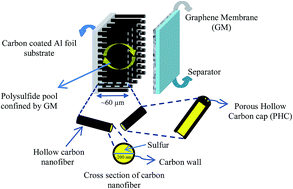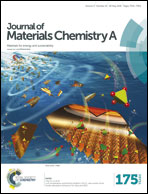Demonstration of 99% capacity retention in Li/S batteries with a porous hollow carbon cap nanofiber–graphene structure through a semi-empirical capacity fading model
Abstract
Lithium/sulfur batteries are a promising candidate for energy storage as they are capable of providing higher energy density in comparison to conventional Li-ion batteries. Here a rigorous numerical model is developed to predict the capacity retention of Li/S batteries discharged at different rates by taking into account the polysulfide (PS) shuttling effect for various nanostructured cathodes. In a numerical model, capacity fading of the cell is considered to be affected by the concentration of sulfur dissolved into the electrolyte and deposited on the anode as a Solid Electrolyte Interphase (SEI) layer. Our approach considers SEI layer formation as the main factor that dominates capacity fading over initial cycles (50 cycles). Equivalent Porosity (EP) is determined for various nanostructures and the model asset structures with smaller EP result in smoother capacity fading over cycling performance. The mean value of percentage error between simulation results and experimental capacity in all analyzed structures is less than 5%, except for mesoporous carbon at high discharge rates (1C). Using simulation results we propose Porous Hollow Carbon cap Nanofiber–Graphene (PHCN–G) as a highly efficient nanostructured cathode with a minimum shuttling effect and >99% capacity retention for long-cycling lifetime batteries.


 Please wait while we load your content...
Please wait while we load your content...